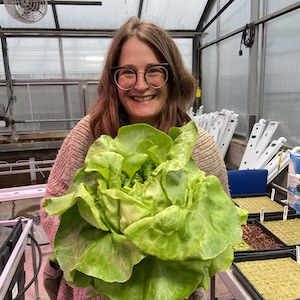For many communities, particularly in urban areas without a lot of local farmers, access to fresh fruits and vegetables is hard to come by. Many homeowners do not have the right growing spaces in their own homes to plant a garden, leaving them at the mercy of the local supermarkets to provide their fruit and vegetable intake.
Community gardens provide a solution that can create access to fresh fruits and vegetables with a focus on working together within the community at the same time.
What Is a Community Garden?
According to the American Community Gardening Association, community gardens are gardens that grow anything to benefit a community. This can include fruits, vegetables, or flowers; however, most communities focus on community gardens that grow food. These gardens are managed by members of the local community, and generally, the members will partake of the crops they help cultivate.
Why Start a Community Garden?
A community garden benefits your local community in several ways. The most obvious is in the plants or produce grown, which bring food and beauty to the local community. In one research study published in the Journal of Nutrition Education and Behavior, researchers found that households with a family member involved in a community garden consumed 1.4 more servings of fruits and vegetables per day than those who did not participate.
These public spaces also serve as a gathering point for the community, bringing together the neighborhood with the common goal of growing plants. They can serve as a beautiful focal point in the community, and often they provide a fresh food source to under-served populations. Finally, community gardens can teach youth about horticulture and where their food comes from.
Steps to Starting a Community Garden
If you feel that a community garden would be an asset to your community, then you need to get started on building one. As you think about how to begin, consider these steps:
1. Find Available Land
Before you can build a garden, you must have a spot for it. Look around your community and find land that is available, near water, and with decent soil or enough ground to build containers.
Vacant lots are often a great option, as long as you can get permission from the lot’s owner to build the garden there for the growing season. You might need to rent the space, in which case you’d need to charge for plots in the garden. Also, check the zoning laws to ensure building a community garden won't violate any local regulations.
2. Engage Your Community
Once you find a space, get started on building engagement within your community. You'll need a team to help build the community garden, so reach out to others who might be interested.
One of the best ways to build excitement about your garden is through crowdsourcing. As you raise funds in the community for the supplies you will need, you can also generate interest in the garden. Ask participants to brainstorm ideas for how to subdivide the plots and get more people to participate.
As you get more people on board, be sure to outline the roles and responsibilities of members. Consider making a Rules and Agreements document that participants must sign. For example, you may want to indicate who is responsible for keeping weeds at bay and who is allowed to harvest from the garden.
3. Find Resources to Support Your Community Garden
Most community gardens cost between $3,750 and $7,500 to start, but if they are particularly large, they could cost much more than this. You will also need liability insurance, which adds several hundred or several thousands of dollars of cost, and you will need to rent your lot. Maintenance of nonrented plots also adds to your total. You’ll need to make a plan for covering these costs.
Determine your budget, then create a plan for raising the funds. Fundraising efforts from garden members are a good starting place, but you might want to look at community garden grants or corporate sponsorship, especially for those early startup costs.
Planning for the size of the garden is also important. The size should be based on the number of plots you hope to rent out. A plot should be between 100 and 500 square feet. Determine the number of plots you want and how big you want them to be, then choose a size for your garden.
What produce would meet the most important needs of your local community? Focus on these.
4. Decide What to Plant in a Community Garden Plot
While you might have grand ideas about planting a variety of fruits and vegetables, make sure you consider the local climate, available sunlight, soil conditions. Since you won’t have a lot of equipment available to tend your garden, and you'll be relying on local community members, you want to plant things that will grow well in the local area.
Also consider the community’s needs. What produce would meet the most important needs of your local community? Focus on these.
Finally, plant a garden that will produce throughout the season, with some early summer produce all the way through fall. This will make it more worthwhile.
Another option is to allow members to choose what they plant, but you will want to provide some guidance so they have a better chance of successfully growing their plot.
5. Prep and Build the Site
Now that the basic planning is underway, you are ready to start building. Decide how you will divide the site, whether by individual plots or individual beds. Determine how composting will be handled and how you will protect the space while keeping it accessible to members.
Another consideration as you prep and build is where you will start seedlings. You might recommend that members start their plants at home and transfer them for the best chance at good growth.
Finally, consider the appeal of the space. A community garden can be a beautiful addition to your community if you put in a little time and effort. You can add benches and storage to make it more user-friendly as well.
6. Determine Rules and Put Them in Writing
At this point, you have already thought about your rules, but now it is time to put them in writing. Some things to consider include:
- Watering schedule: Who will water the garden?
- Weeding schedule: How will you manage weeds?
- Organic gardening: Will you require only organic gardening methods, and if not, how will you protect plots from over-spray of chemicals?
7. Maintain and Grow Your Community Garden
Once the garden is growing, keep it going strong by promoting involvement through the year. Community events and meals in the garden can renew interest in the space and bring in new garden members. It can also generate support from local businesses who may wish to serve as sponsors. You can even create a farm-to-table experience by making meals using produce grown in the garden.
Share in the success of your harvest. If you have an excessively bountiful harvest, give it away to others to share the benefits of the community garden or donate it to the local food pantry. The more eyes you get on your garden, the greater its overall success will be.
Keep up with basic maintenance on your garden, too, so it remains a beautiful, productive asset to your local community.
Learn More About Gardening with a Horticulture Degree
Building a successful community garden is easier if you understand horticulture well. A Master of Professional Studies in Horticulture will position you well to oversee the development of a community garden. With a better knowledge of plants and how they can grow and thrive, you can build a garden that will be an asset to your local community. The University of Minnesota College of Continuing and Professional Studies has a Master of Professional Studies in Horticulture degree that is worth considering. This career-focused and customizable degree will open the door to a range of career options while helping you gain skills you can apply to your community garden project. Reach out to an admissions counselor today to learn more about this degree program.
Sources:








